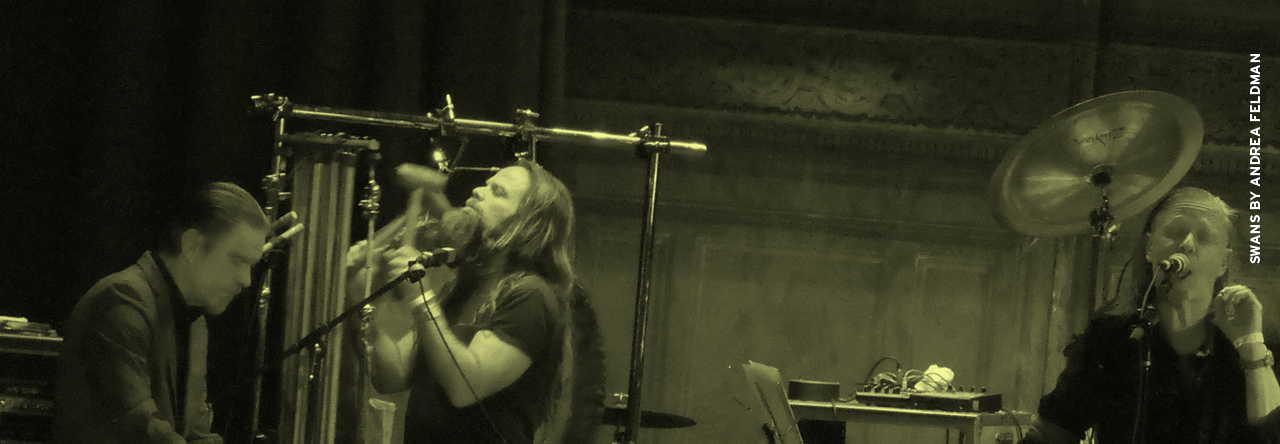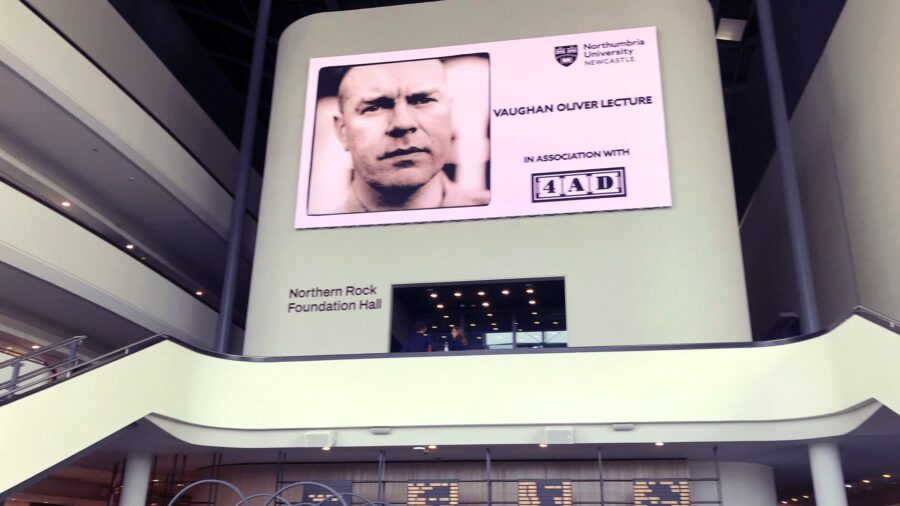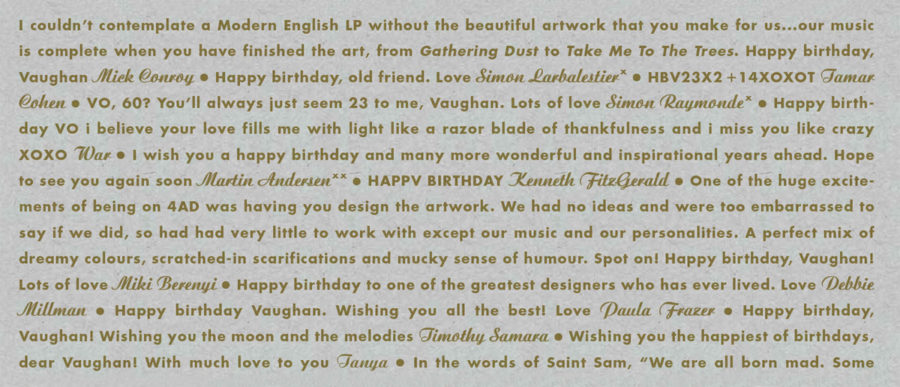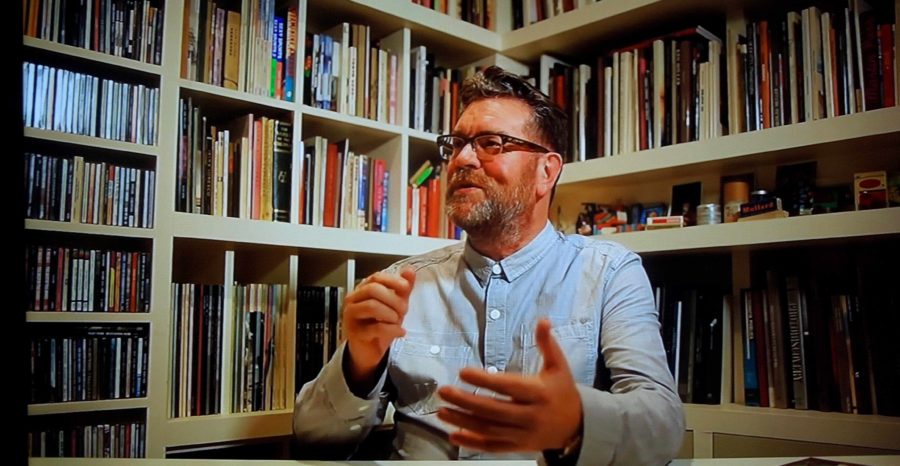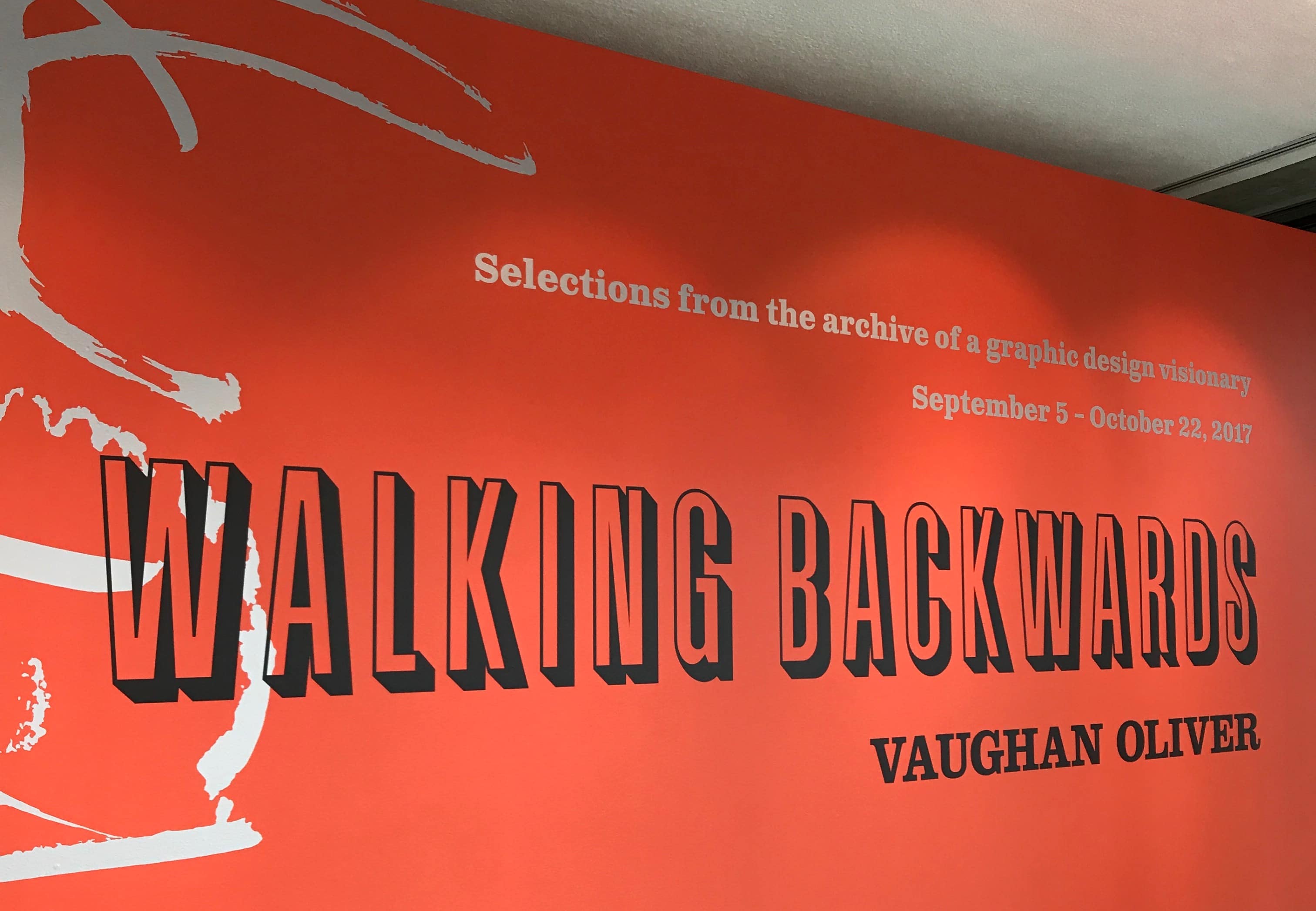The phrase “fucked-up and photocopied” is often used to describe the aesthetic of punk graphics. Imagine visuals that have been chopped, warped, repeated, inverted, and so on, until the meaning becomes distorted and new. While the work of the late designer Vaughan Oliver grew in increasing complexity over the course of his long career, it always retained a certain roughness and the spark, the grit of the imperfect. That fucked-up-ness, if you will. As he himself said of his work with the Pixies (perhaps the band that he will be most associated with, despite working with a broad spectrum of musicians, artists and clients): “You imagine designing sleeves for your own record collection. The David Lynchian moods in there, the black humor, the surrealism — there’s such natural inspiration for me.”

3) Vaughan + Bruce Gilbert (Wire) at the ICA, 1993. (Photo by me)
4) Vaughan and a skirt of eels.
Natural? Or unnatural? Either way, Vaughan never looked to the usual sources to draw inspiration. (And his weapon was often the now-obsolete PMT camera, a crucial ally in making beautiful accidents with type and texture.) “I would take something from Vaughan’s experience and his body of work and think about what happens when you step away from the computer and when you use your hands,” Vaughan’s peer, Adrian Shaughnessy, has noted. “Vaughan certainly advocated the use of hands in his teaching. And I suspect, deep down, he actually regretted the computerization of graphic design. Keep in mind that a lot of the best work was done manually.”
Shaughnessy was just one of the speakers reflecting on the work and legacy of Vaughan Oliver at the Glasshouse (formerly the Sage Gateshead) in Newcastle, UK, on September 14. Vaughan’s v23 colleagues, Chris Bigg and Timothy O’Donnell, also delved deep into their memories of their close-knit, challenging and fruitful collaboration at 4AD, where Vaughan served as the in-house designer for 20 years. The audience represented a wide swath of musicians, designers and photographers whose careers and working methods were forever warped, thanks to their work with the formidable V.O. Attendees included Miki Berenyi from Lush, Anja Huwe and Manuela Zwingman from Xmal Deutschland, artist Russell Mills, photographers Dominic Davies and Kevin Westenberg, Glen Johnson from Piano Magic, and Vaughan’s family, to name but a few. (The lecture also marked the inauguration of the Vaughan Oliver Graphic Design Scholarships, a 10-year initiative supported by 4AD to provide opportunities for talented students to study design at Vaughan’s alma mater, Northumbria University.)

